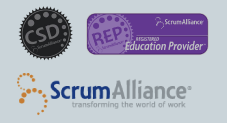Start Simple then Enhance
Continuing my series of posts based on Seven Strategies for Writing Better Stories from my book, Beyond Legacy Code: Nine Practices to Extend the Life (and Value) of Your Software, here is the next strategy. Another great aspect of using stories to drive Agile software development is that we can start with simple stories that create …
Continue reading “Start Simple then Enhance”
Read MoreKnow Why a Feature is Wanted
Continuing my series of posts based on Seven Strategies for Writing Better Stories from my book, Beyond Legacy Code: Nine Practices to Extend the Life (and Value) of Your Software, here is the next strategy. One of the most powerful and important aspects of user stories is the WHY clause. WHY a feature is wanted is …
Continue reading “Know Why a Feature is Wanted”
Read MorePersonify the Who of Stories
Continuing my series of posts based on Seven Strategies for Writing Better Stories from my book, Beyond Legacy Code: Nine Practices to Extend the Life (and Value) of Your Software, here is the next strategy. When developers know WHO a feature is for and can identify with that user then they can often build a better …
Continue reading “Personify the Who of Stories”
Read MoreFocus Stories on the What
Continuing my series of posts based on Seven Strategies for Writing Better Stories from my book, Beyond Legacy Code: Nine Practices to Extend the Life (and Value) of Your Software, here is the next strategy. Focus Stories on the What The most important aspect of a user story is contained in the WHAT clause because …
Continue reading “Focus Stories on the What”
Read MoreSee Stories as Placeholders
Last year, I finished a series of 72 blog posts that expanded on the first set of “Seven Strategies…” for each practice in my book Beyond Legacy Code: Nine Practices to Extend the Life (and Value) of Your Software. I included two sets of “Seven Strategies…” in my book and I think it’s time to …
Continue reading “See Stories as Placeholders”
Read MoreGreen Tests and Red Tests
In practice I found that there are times that I want a bit more test coverage than I get from just doing test-first development. When I do test-first development, I always write a failing test first and then I create the implementation to make that failing test pass. As a result, I get by default …
Continue reading “Green Tests and Red Tests”
Read MoreRadiators and Silos
In the old days of corporate America, the way you got ahead was through hard work and perseverance. You strove to become an expert in some area that was valuable so the people would come to you for your expertise. This is how you got ahead. This is how you got into management. You got …
Continue reading “Radiators and Silos”
Read MoreMakers and Menders
I’ve been getting back into some research interests of mine that require data acquisition from a variety of sensors so naturally, I’ve gravitated towards using the Raspberry Pi. If you’re unfamiliar with the Raspberry Pi, is a full-blown computer on a card about the size of a cigarette pack and offers a graphical user interface, …
Continue reading “Makers and Menders”
Read MoreCore Developer Practices
Every field of engineering has a core set of practices that they follow and software engineering is no different. But what are they? The answer seems to depend upon who you ask. There is no overall consensus in our field about what the right standards and practices should be. We have many languages, many frameworks, …
Continue reading “Core Developer Practices”
Read MoreSO what?
When I asked professional software developers in companies what software development and design principles, they follow I oftentimes get a blank stare. Our industry has not matured enough to be able to extract out the major principles of constructing software the way civil engineering has been able to extract out the major principles of constructing …
Read MoreStill XP After All These Years
Are you humming in your head Paul Simon’s “Still Crazy After All These Years”? I am. And it does seem crazy. Crazy that some ideas that came out over 20 years ago in the fast-paced software industry are still relevant and valuable today. But they are. Kent, Ron, Ward, and many others who were early …
Continue reading “Still XP After All These Years”
Read MoreHow I Use User Stories
When I write user stories, in addition to the story itself, I like to help define edge cases in my stories and I typically do this as acceptance tests. There are automated acceptance test tools such as FIT and Cucumber that not only allow me to define acceptance tests but also help me run them …
Continue reading “How I Use User Stories”
Read More